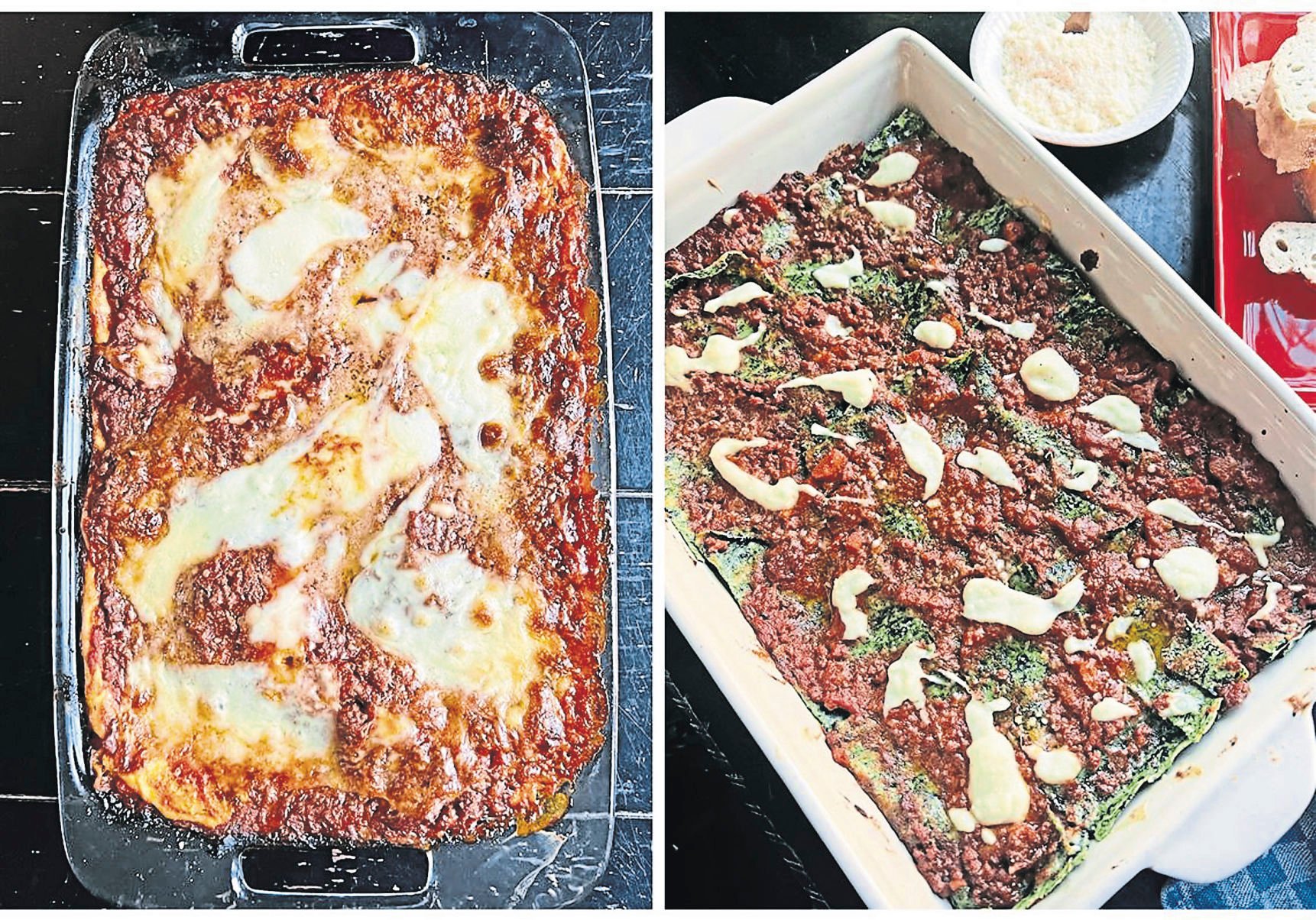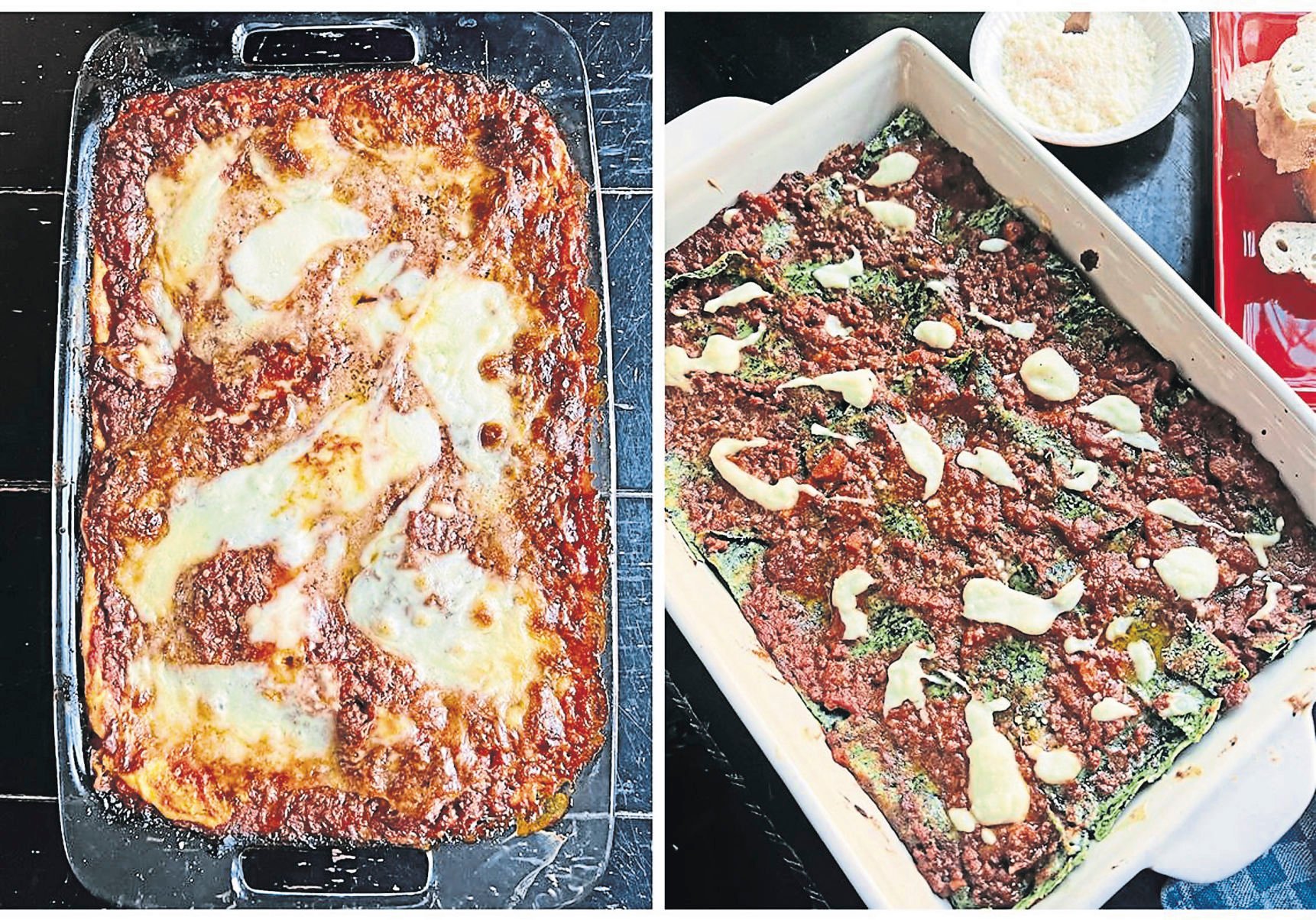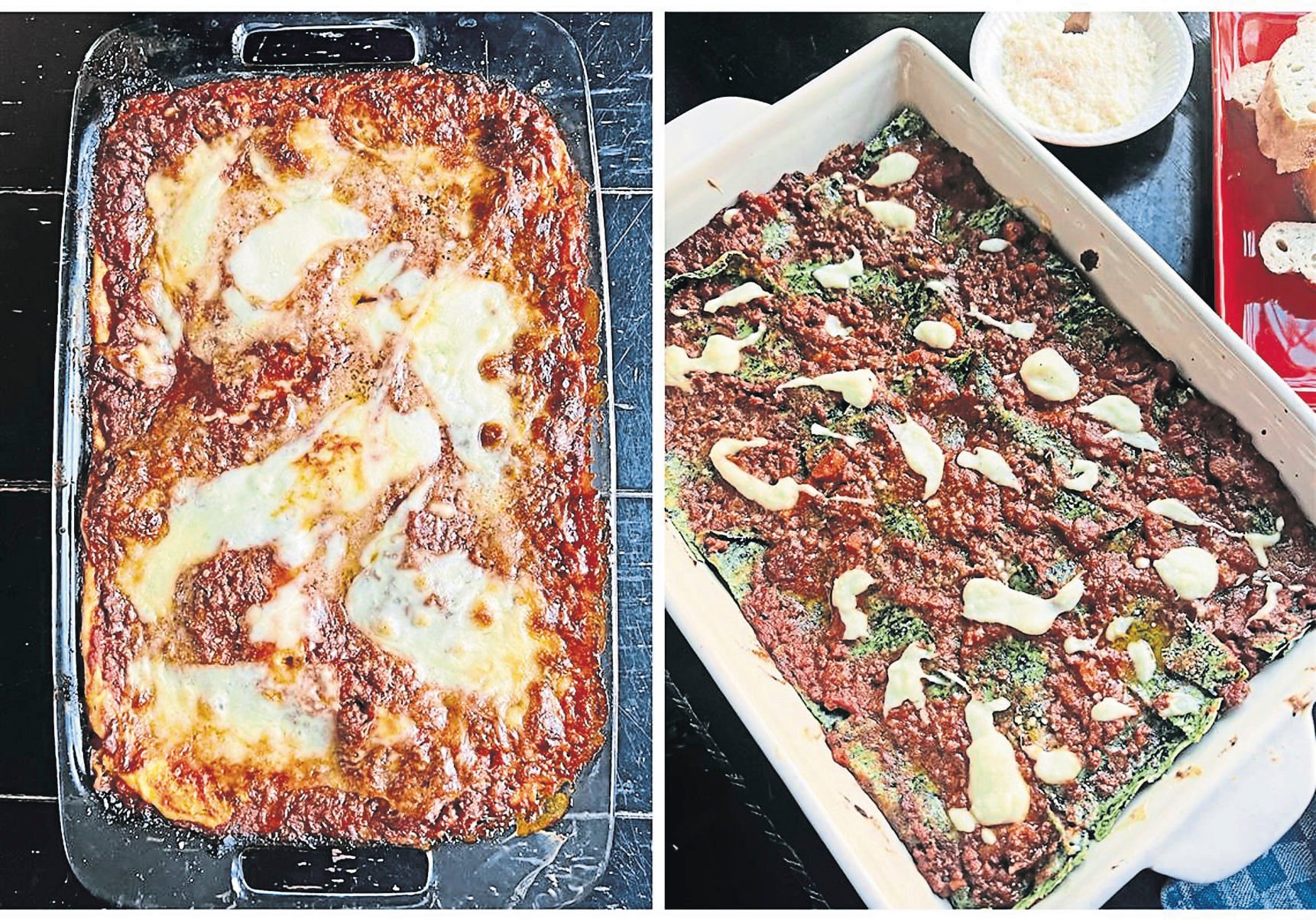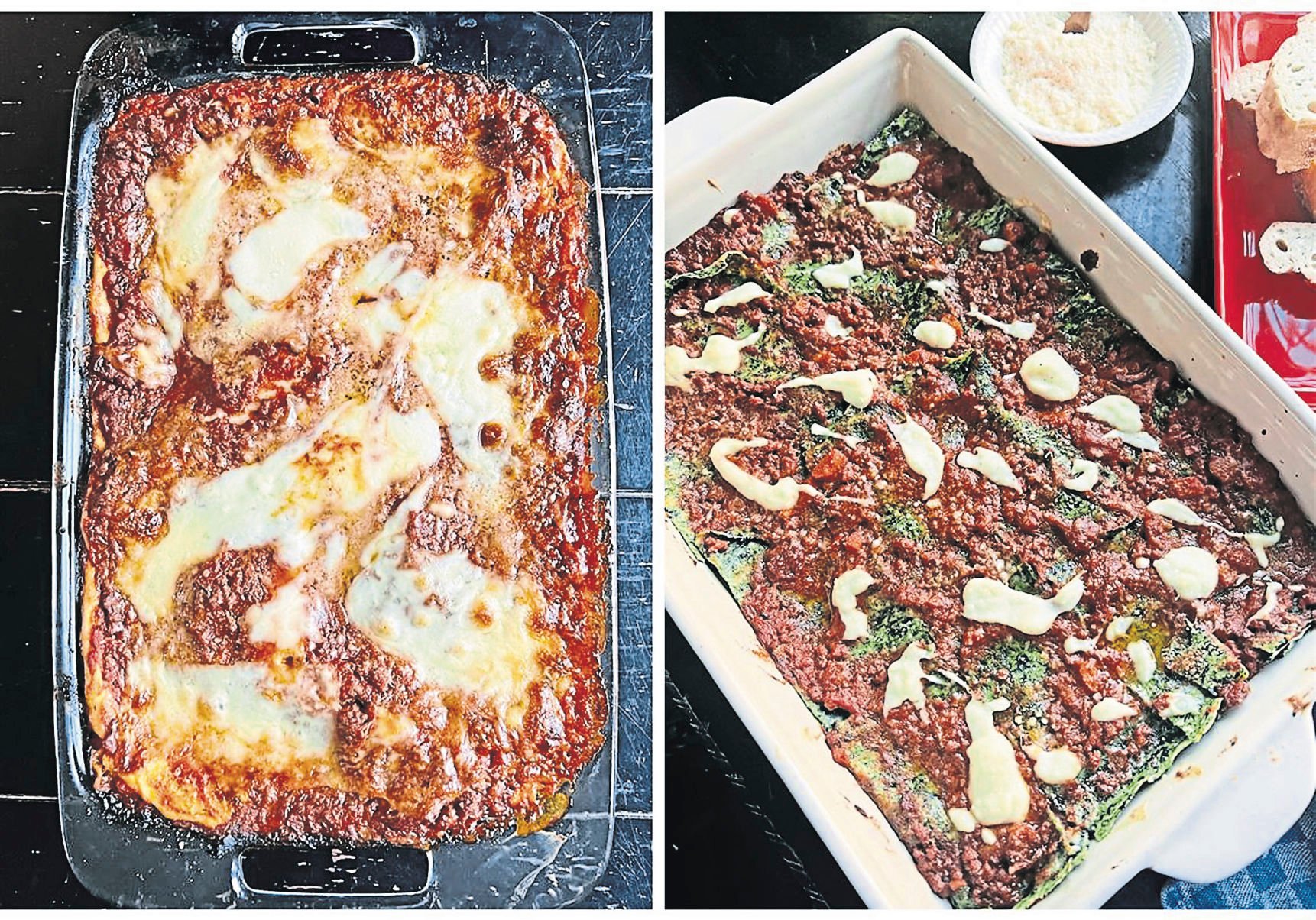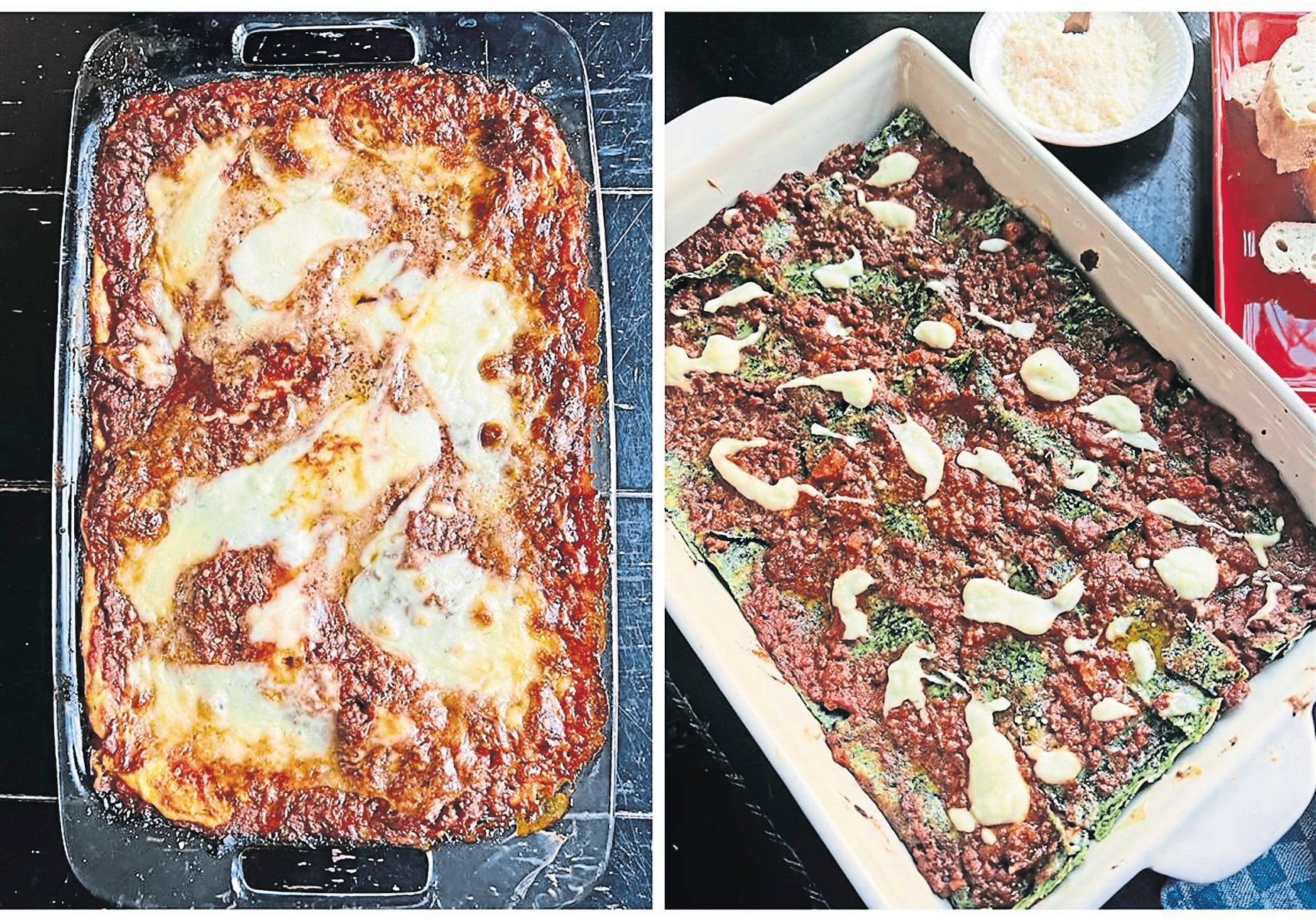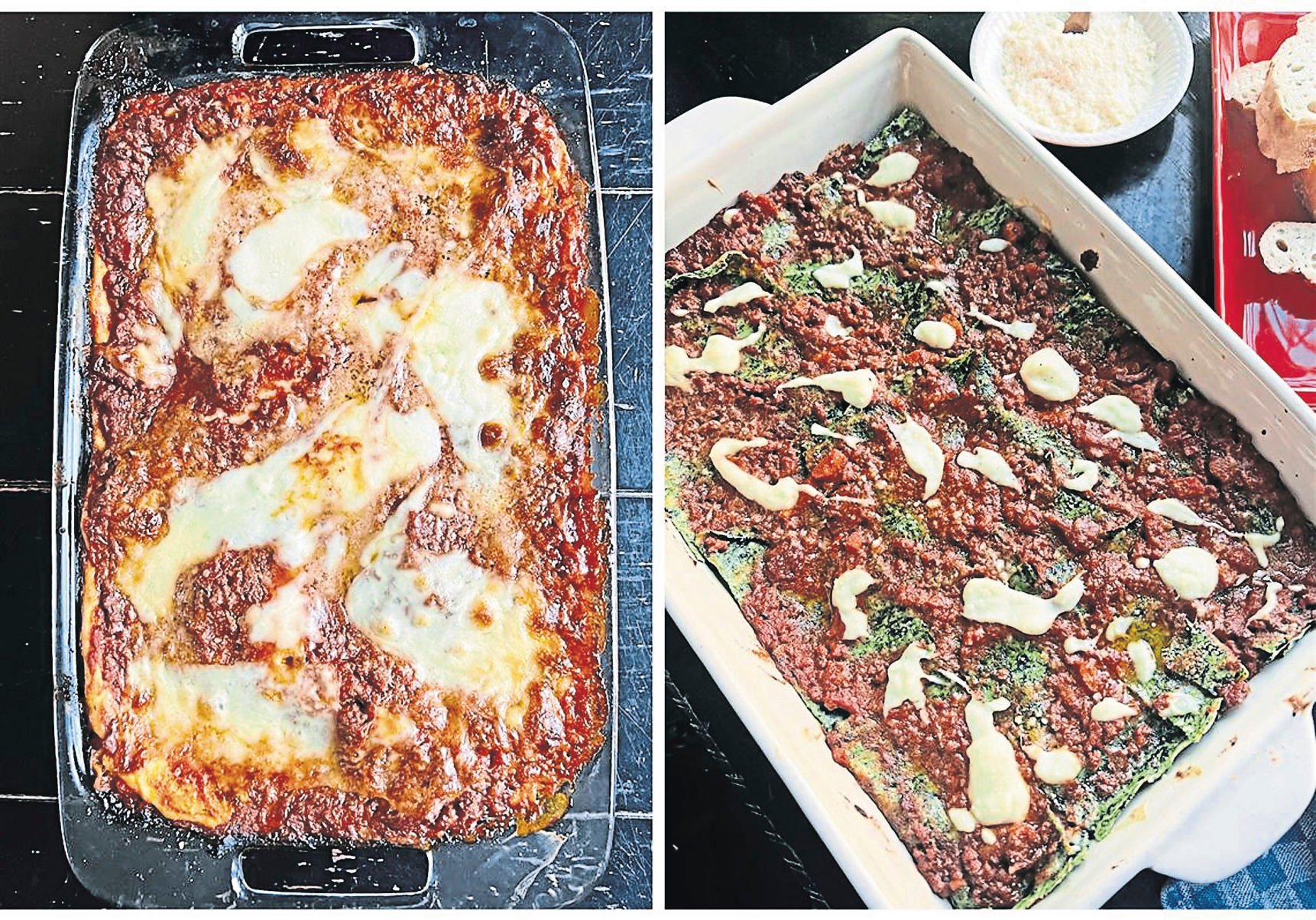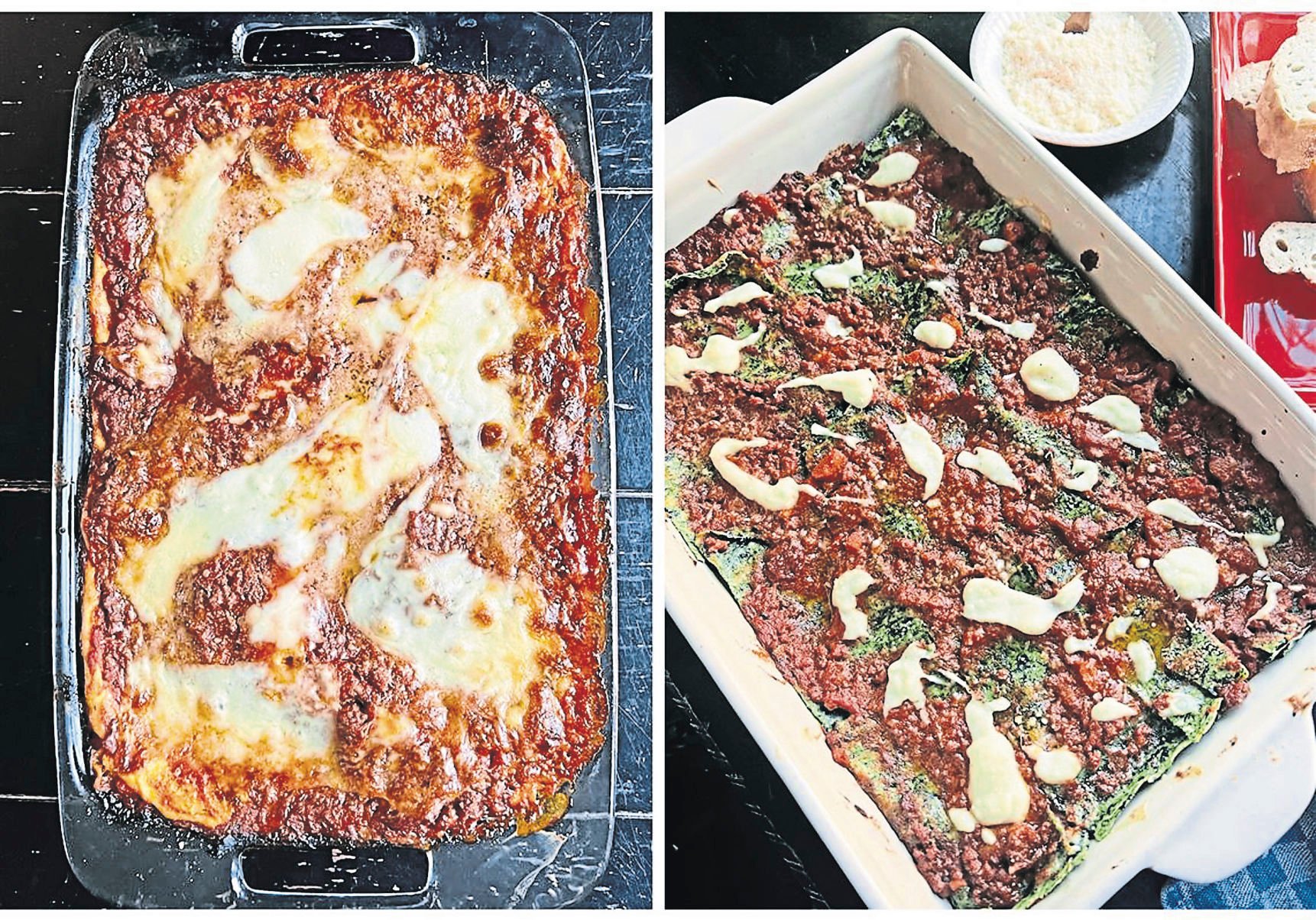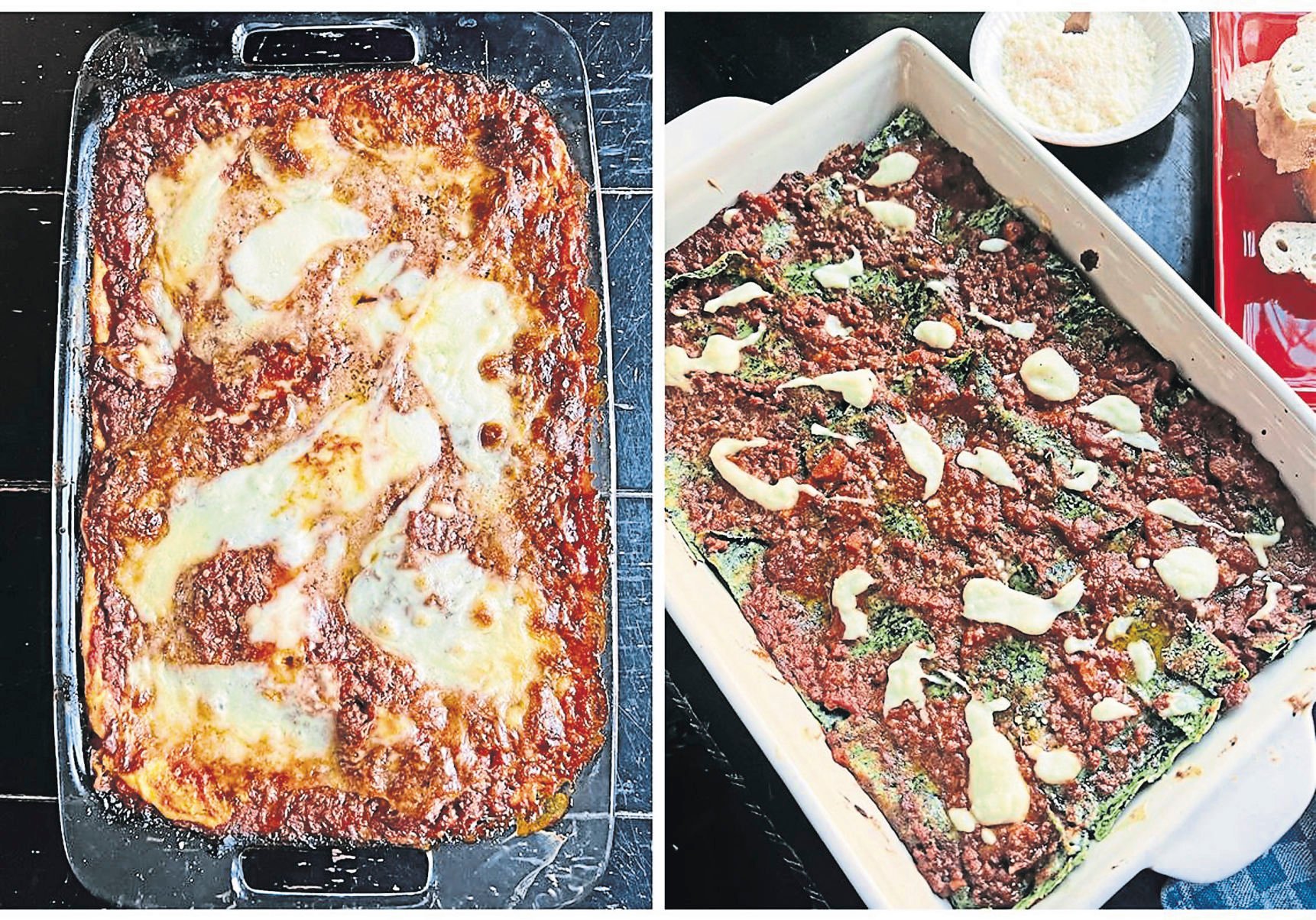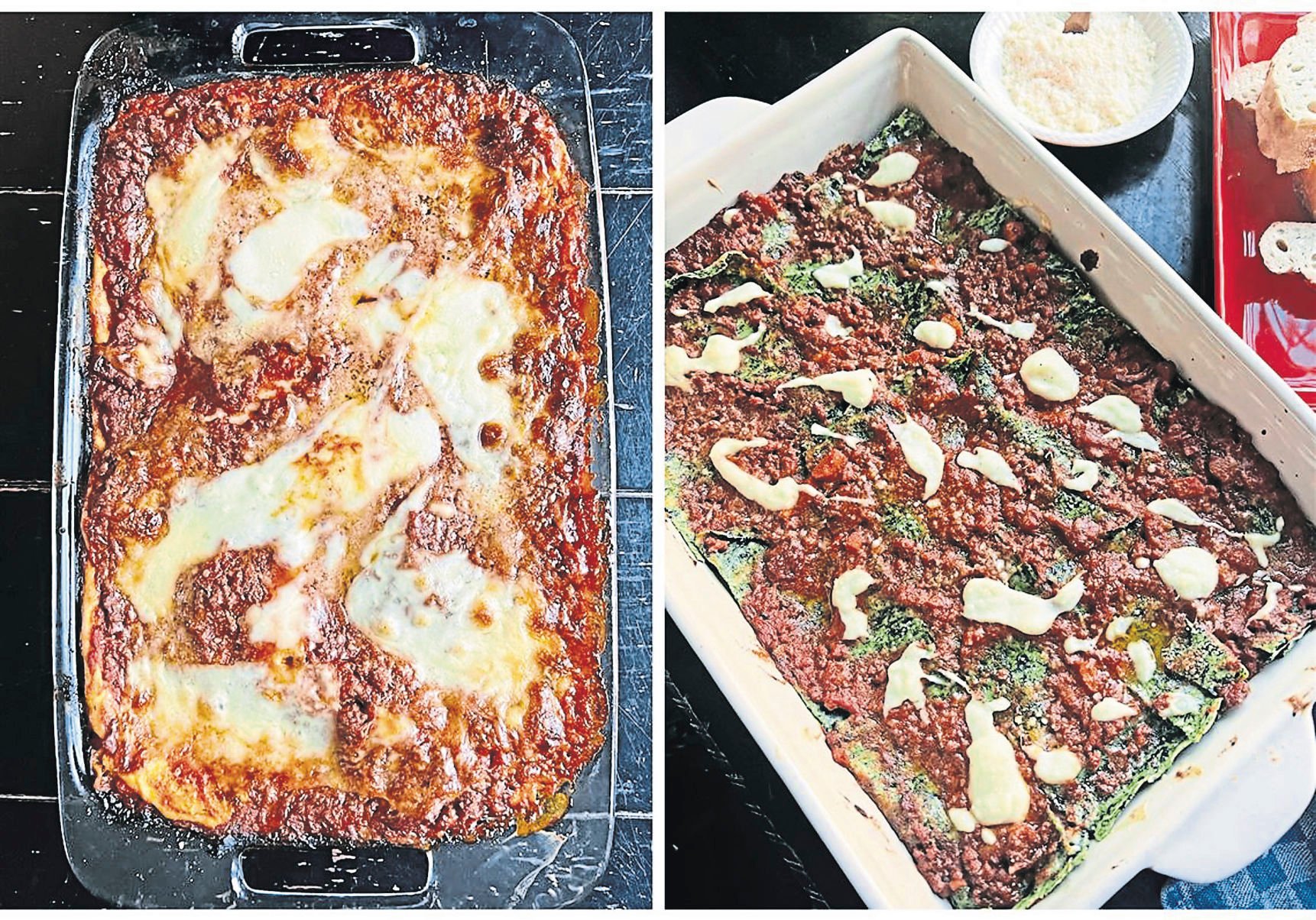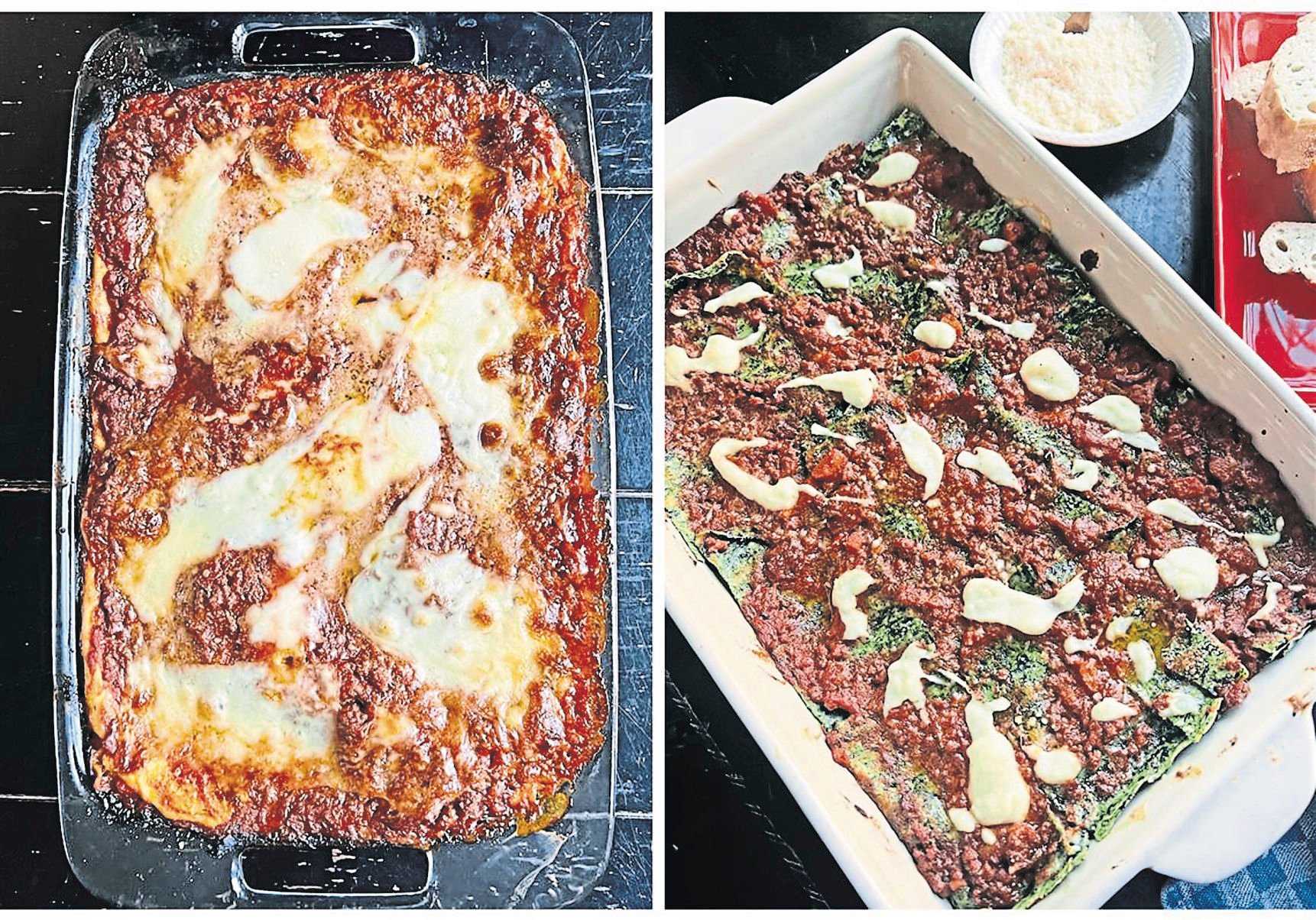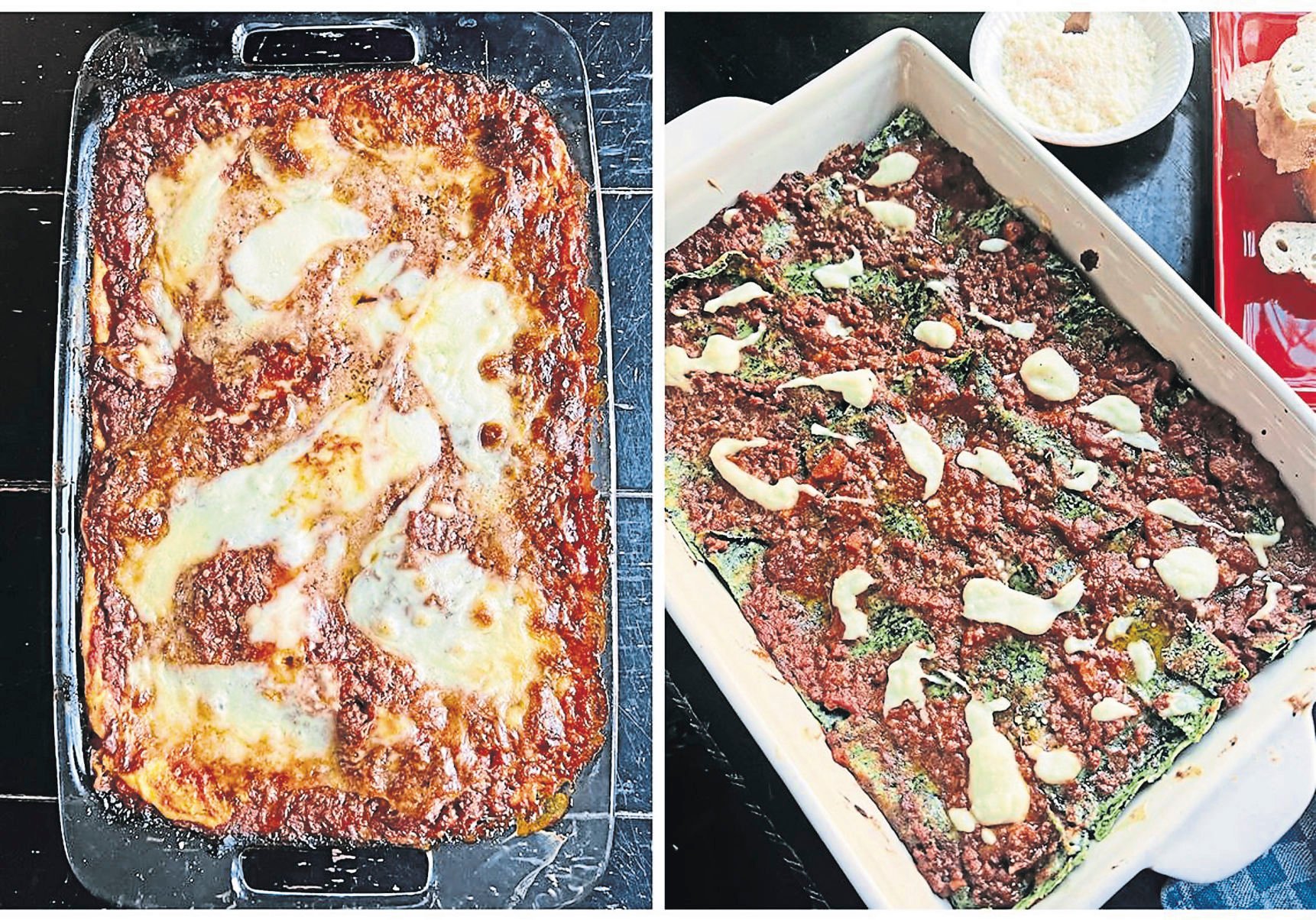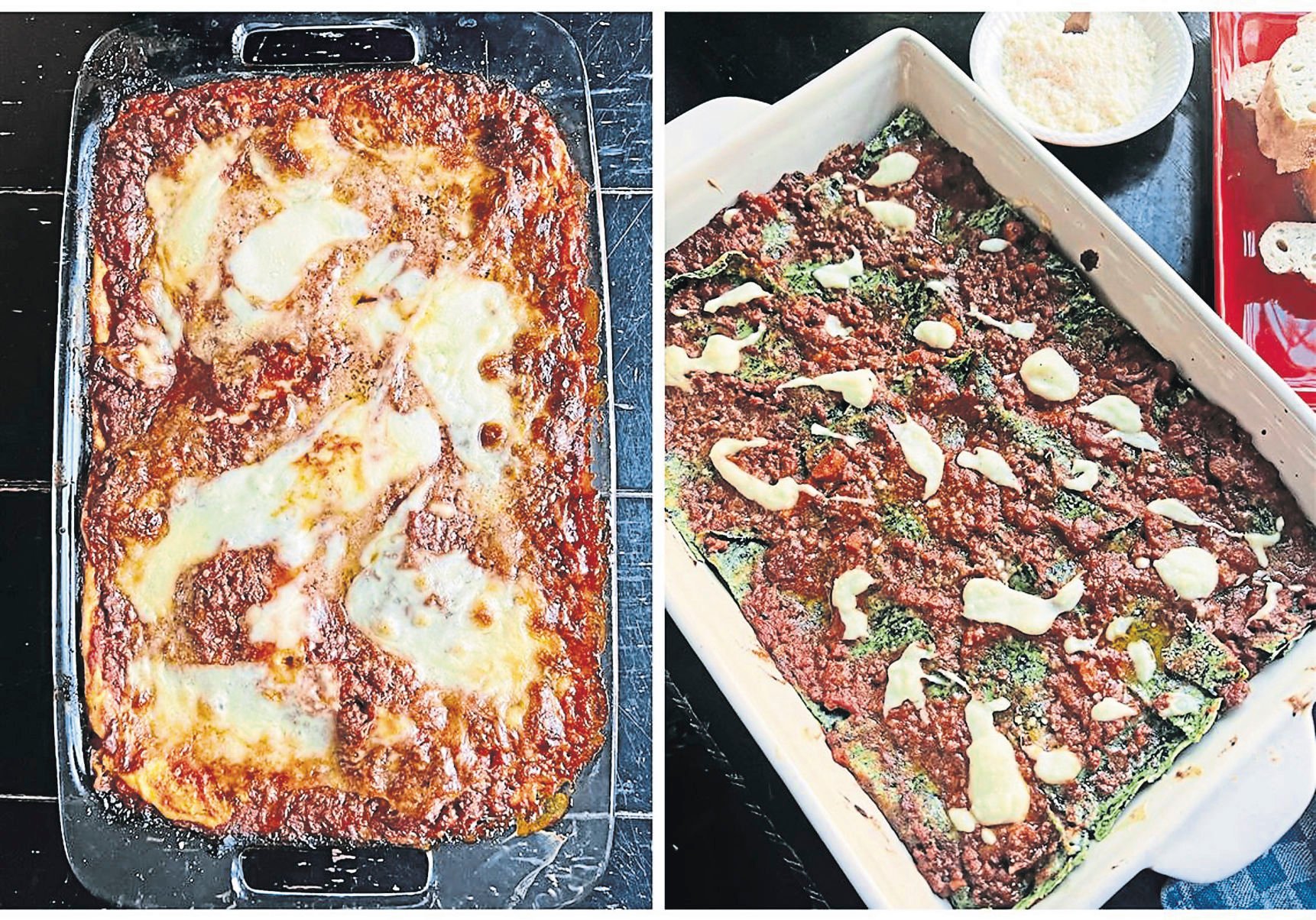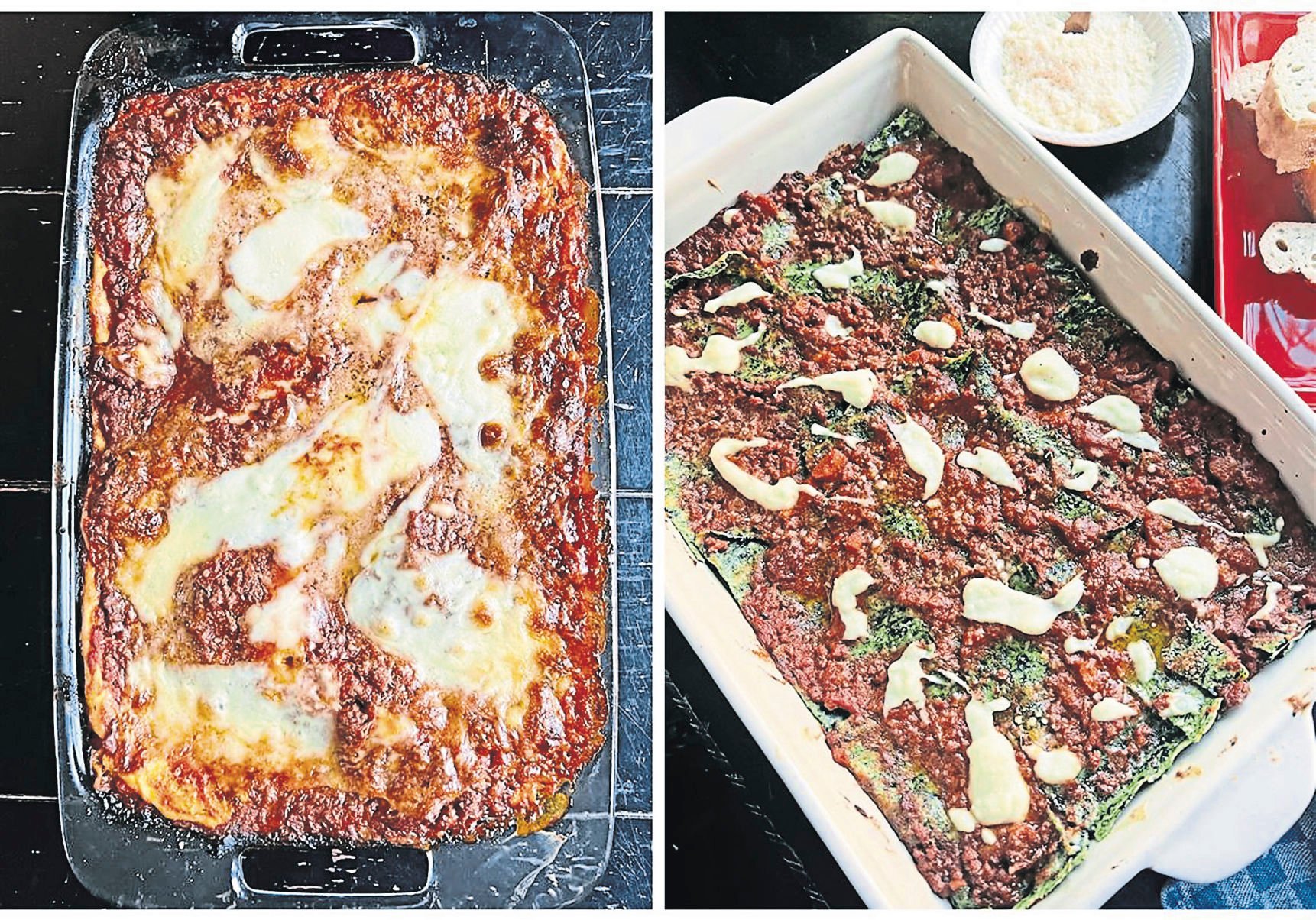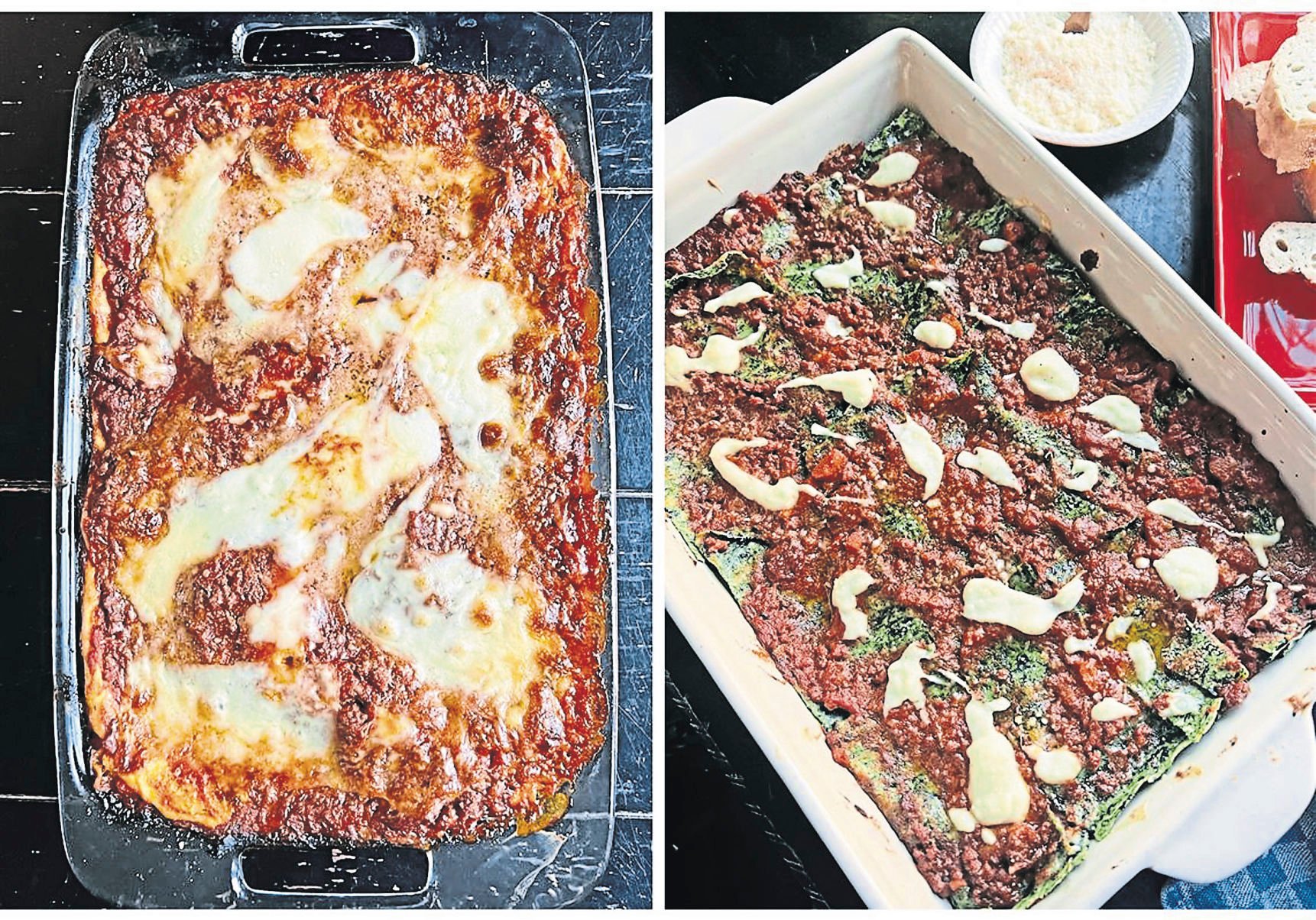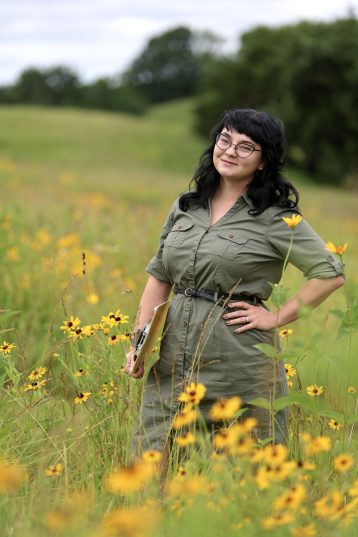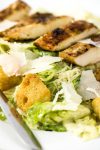Casseroles have long been a favorite for family meals and gatherings because one-pan dishes are easy to make, a dream to portion and can feed a crowd.
Lasagna is a particular favorite because who doesn’t love the magical marriage of cheese, pasta and tomatoes? Add that it can be composed ahead of time, taking some of the stress out of weeknight cooking, and you’ve got the perfect comfort food. It’s especially life-affirming in winter, when we crave rich and hearty dishes jam-packed with carbs.
In 2001, John Chandler, of Dallas, submitted a version of his mother’s lasagna to the food-focused online social networking service Allrecipes.com. In a bold move, he named it the “World’s Best Lasagna,” and the rest is history.
In the years since, the recipe has been rated by nearly 20,000 home cooks and has the most reviews of any recipe on the site, according to Esmee Williams, the site’s consumer and brand strategy vice president. Last year, at the height of the pandemic, it was Allrecipes’ third most-viewed recipe behind only good ol’ fashioned pancakes and easy meatloaf.
Thanks to its solid five-star status, the recipe also has been “pinned” tens of thousands of times — despite its 20 ingredients and 2½ hour cook time.
“Clearly this recipe has the flavors and features cooks are looking for — especially when feeding a crowd,” Williams said.
The recipe, she added, exudes a “feeling of authenticity” while using readily accessible ingredients. It also appeals to cooks who like to tweak recipes — using turkey instead of beef or adding red wine instead of water. And a great title “communicates confidence,” Williams said.
Italian variations
While Chandler’s recipe takes hours to prepare, with a host of ingredients, many American lasagnas do not. For that, we can thank dried lasagna noodles and the recipes printed on the boxes.
Yet, the standard-bearer that originated in Emilia-Romagna in northern Italy in the 19th century was a dish for feasts and other special occasions, made with long-simmered meat sauces, velvety bechamel and delicate, fresh pasta rolled by hand.
“It’s a cultural thing,” said food historian and cookbook author Francine Segan. “In Italy, the custom is to prepare a special dish like lasagne with care and time for Sunday dinner and special occasions. It takes hours.”
The dish is older than you might think: What Italians know as lasagne (plural for the noodles) is derived from the Greek word laganon — flat sheets of dough cut into thin strips. As early as the 4th century B.C., Etruscan frescoes in the Tomb of Reliefs in Lazio near Rome depicted the basic tools and ingredients to roll and form pasta, as well as banquets showing diners enjoying an early version.
The first written recipe for a lasagna-like dish appeared in the 1st century cookbook “De Re Coquinaria,” by Apicius. It wasn’t until the Middle Ages that a recipe approximating modern lasagna — boiled flattened dough sprinkled with cheese and spices — appeared in the 14th-century cookbook, “Liber de Coquina.”
Every Italian region its traditional recipe — and they don’t necessarily include tomatoes (which didn’t arrive in Italy until the 1500s). Lasagne al brodo, baked lasagna in broth, is a typical dish of Molise made with a chicken and veal stock, while Lasagne all’Ascolana, from Ascoli province in the Marche region, features fresh egg lasagna sheets layered with a sauce of ground beef and minced chicken giblets cooked in wine and sliced white truffles.
In southern Italy, lasagna is made with dried sheets of pasta layered with rich meat ragu, ricotta and mozzarella. In the north, especially in Bologna, the most popular version includes fresh egg pasta colored green with spinach and layered with ragu, bechamel and Parmigiano-Reggiano.
In 2003, the Italian Academy of Cuisine added the recipe for Green Lasagna alla Bolognese to its archives, even though Neapolitan lasagna — which includes fried meatballs, ricotta, mozzarella and hard-boiled eggs — has the most historical documentation, according to the magazine La Cucina Italiana.
Best ingredients
You’re more likely to find the famed Italian casserole offered by the pan, family style, for takeaway meals and banquets. That’s because lasagna is relatively expensive to make and quite labor-intensive.
“And to be honest, there’s more interesting food items out there,” said Frank Vitale, chef and owner of Cucina Vitale. “What makes a good lasagna is like anything else — use the best ingredients.”
Fiore Moletz, owner of Della Terra, is another who offers lasagna family style. He agrees that the dish is only as good as its components.
“It’s so simple it has to be done with the best ingredients and techniques,” Moletz said.
For him, that means seven to 12 layers of fresh pasta topped with a mix of creamy bechamel and bolognese that’s been cooked slowly over low heat with prosciutto ends instead of pancetta. He also tucks fresh basil into the pasta somewhere between the fourth and fifth layers.
“The way you build flavors is super important,” he said.
Whatever recipe you choose, be sure to follow these simple rules from the experts:
• Thinner is better when it comes to noodles, whether you’re making it from scratch or choosing a boxed variety. You also probably want to avoid no-boil noodles, as it can make your lasagna heavier and drier if there’s not enough liquid in the sauce.
• Use the best ingredients you can afford — premium cream, real Parmesan-Reggiano, Italian plum tomatoes and quality meats.
• Cook the sauce until it’s thick, or your lasagna will be watery.
• Choose a casserole dish that’s deep enough for easy layering, and make sure the final layer of pasta is covered by sauce and topped with cheese.
• Don’t overcook. Fresh pasta will get mushy if baked too long. Even if you use boiled lasagna noodles, you’re rewarming the ingredients once the pan goes into the oven.
• Let the lasagna sit for 15 minutes, or it will disintegrate into a sloppy mess.
• Above all, have fun while you’re creating your masterpiece. It’s lasagna, after all. “Take your time and enjoy the process,” Segan said.
Gretchen McKay writes for the Pittsburgh Post-Gazette.
World’s Best Lasagna
• 1 pound sweet Italian sausage
• ¾ pound lean ground beef
• ½ cup minced onion
• 2 cloves garlic, crushed
• 1 (28-ounce) can crushed tomatoes
• 2 (6-ounce) cans tomato paste
• 2 (6.5-ounce) cans canned tomato sauce
• ½ cup water
• 2 tablespoons white sugar
• 1½ teaspoons dried basil leaves
• ½ teaspoon fennel seeds
• 1 teaspoon Italian seasoning
• 1½ teaspoons salt, divided or to taste
• ¼ teaspoon pepper
• 4 tablespoons chopped fresh parsley
• 12 lasagna noodles
• 16 ounces ricotta cheese
• 1 egg
• ¾ pound mozzarella cheese, sliced
• ¾ cup grated Parmesan cheese
Prepare sauce: In Dutch oven, cook sausage, ground beef, onion and garlic over medium heat until browned. Stir in crushed tomatoes, tomato paste, tomato sauce and water. Season with sugar, basil, fennel seeds, Italian seasoning, 1 teaspoon salt, pepper and 2 tablespoons parsley. Simmer, covered, about 1½ hours. Bring pot of lightly salted water to boil. Cook lasagna noodles in boiling water for 8-10 minutes. Drain noodles and rinse with cold water. In mixing bowl, combine ricotta cheese with egg, remaining parsley and ½ teaspoon salt. Preheat oven to 375 degrees.
Assemble lasagna: Spread 1½ cups meat sauce in bottom of 9- by 13-inch baking dish. Arrange 6 noodles lengthwise over meat sauce. Spread with one half ricotta cheese. Top with third of mozzarella slices. Spoon 1½ cups meat sauce over mozzarella and sprinkle with ¼ cup Parmesan. Repeat layers and top with remaining mozzarella and Parmesan. Cover with foil. Bake for 25 minutes. Remove foil and bake an additional 25 minutes. Cool for 15 minutes. Serves 12.
— Allrecipes.com
Classic Lasagne alla Bolognese
For Bolognese sauce
• 5 ounces porchetta or bacon
• 2 tablespoons butter
• 2½ ounces finely chopped carrot
• 2 ounces each finely chopped celery, onion
• 11 ounces ground beef
• ½ cup red wine
• 10 ounces tomato puree
• Beef broth
• 1 cup milk
• Salt and pepper
For pasta
• 12 ounces flour
• 2 eggs
• 7 ounces boiled spinach, squeezed and chopped
For bechamel
• 4 tablespoons each butter, all-purpose flour
• 3 cups whole milk
• Salt, pepper, nutmeg
Prepare Bolognese sauce: Dice bacon and fry until crispy. Add 2 tablespoons butter and finely chopped carrot, celery and onion, and sauté. Add ground beef, cook until brown. Add wine, cook until evaporated. Add tomato sauce, cover and simmer for 2 hours, adding broth as needed. When sauce is near finished, add milk to reduce tomato acidity. Season with salt and pepper. Prepare dough: Mix eggs, flour and boiled spinach, squeezed and finely chopped. Knead for 3 minutes. Cover in plastic wrap and let rest at room temperature for 30 minutes. Roll out dough. Bring pan three-quarters of salted water to boil. Cut pastry into squares, toss in boiling water and remove as they surface. Rinse in cold water. Dry on cotton or linen cloth.
Prepare béchamel: Melt butter in saucepan over low heat, add flour and whisk to form paste. Add milk. Heat, stirring, until sauce simmers. Reduce heat and stir until sauce is thick. Season with salt, pepper and nutmeg.
Assemble lasagne: Preheat oven to 325 degrees. Grease bottom of pan. Layer with pasta, meat sauce, bechamel sauce and grated cheese. Add butter in corners to keep edges from drying. Bake for half an hour. Cool for 15 minutes. Serves 6-8.
— Accademia Italiana Della Cucina

